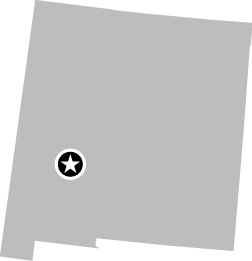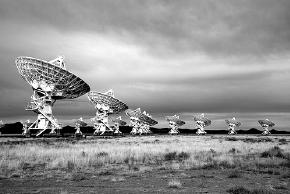107
Very Large Array, Socorro, NM
 34° 4′ 43.98″ N, 107° 37′ 5.49″ W
34° 4′ 43.98″ N, 107° 37′ 5.49″ W
![]()
A Virtual Antenna
In western New Mexico, in the middle of an empty plain, sit 27 radio telescopes that work together to study distant galaxies, stars, quasars, and pulsars by examining their radio transmissions. The Very Large Array of dishes are mounted on railway tracks arranged in a Y shape with 21-kilometer-long branches (Figure 107-1). By mathematically combining data from all 27 radio telescopes, the array acts as if it were a single dish 36 kilometers across. (Building a 36-kilometer radio telescope would have been financially unfeasible; the Very Large Array, by contrast, cost a relatively affordable $79 million.)

Figure 107-1. The Very Large Array; courtesy of David Bales (www.davidbales.com)
The dishes in the Very Large Array are moved using a specially built transporter (which is usually part of any tour). They cycle through four major configurations, called A, B, C, and D, every 16 months. The A configuration has the dishes spread as widely apart as possible—this gives the maximum possible magnification. The D configuration has the dishes only 600 meters apart and is used to study an individual radio ...

